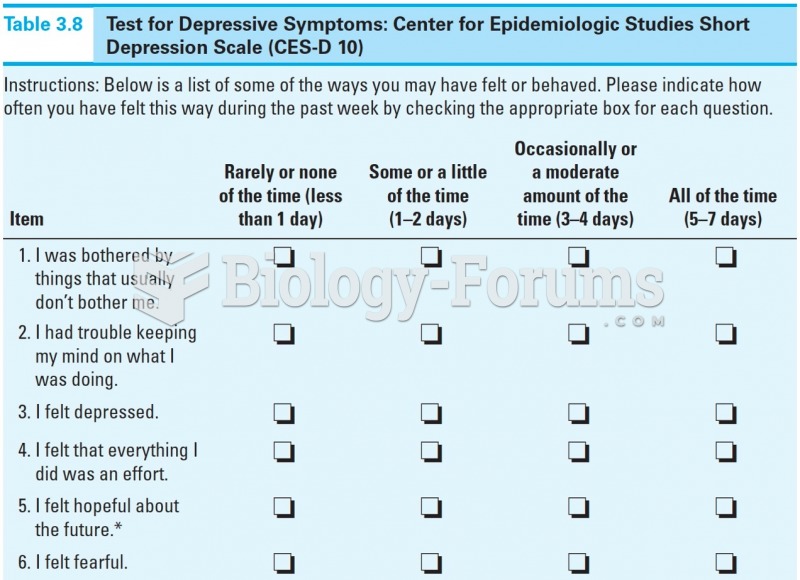This topic contains a solution. Click here to go to the answer
|
|
|
Did you know?
Atropine was named after the Greek goddess Atropos, the oldest and ugliest of the three sisters known as the Fates, who controlled the destiny of men.
Did you know?
Illicit drug use costs the United States approximately $181 billion every year.
Did you know?
If you could remove all of your skin, it would weigh up to 5 pounds.
Did you know?
Pregnant women usually experience a heightened sense of smell beginning late in the first trimester. Some experts call this the body's way of protecting a pregnant woman from foods that are unsafe for the fetus.
Did you know?
Most childhood vaccines are 90–99% effective in preventing disease. Side effects are rarely serious.







